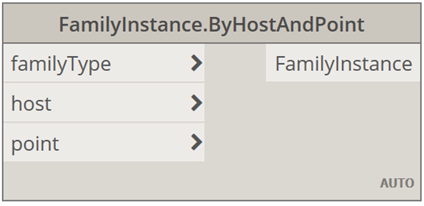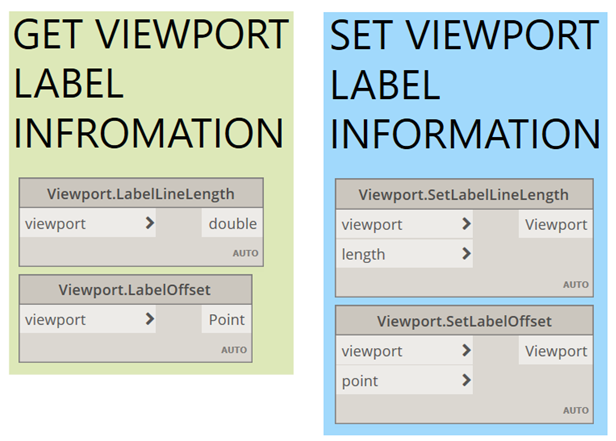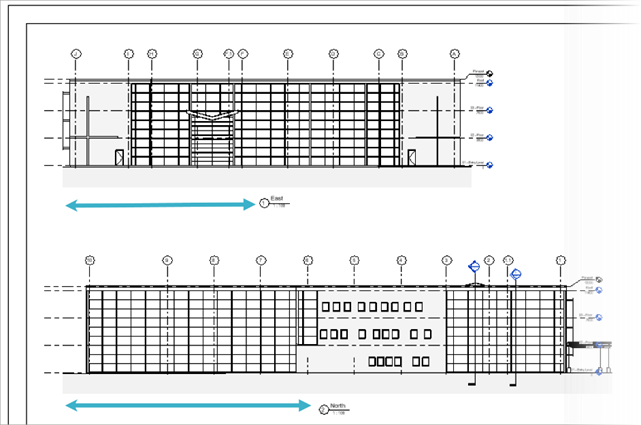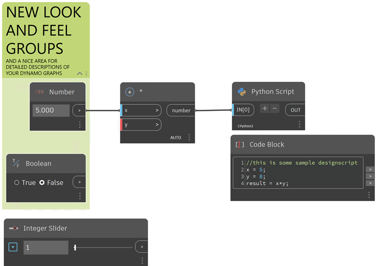A wide array of nodes to place family instances already exists but a very useful addition is the ability to place a family instance by point and host.

This is useful in situations where you want to automate the placement of elements that are hosted. A great example of this could be a light switch. The light switch should ideally be hosted onto a wall and around 200 mm from a door. The placement of the switches can be automated by getting all the door locations, the hosts and returning the hand of the door.
Another example could be to automatically place fire exit signage above fire doors along the exit route.

Several nodes were also added to allow the automated placement and control of ceilings either by providing the floor or wall outlines as curves or a polycurve.

For those wishing to automate the placement of views onto sheets there are some new nodes that allow the control of viewport labels, something that wasn’t possible in Dynamo or the Revit API.

The below image shows a Dynamo graph that will extract all the viewports from each sheet within the Revit project. The new nodes to control the viewport offset and length are then utilised to offset each viewport label to the bottom centre of each view. Finally, the viewport label length is set. Note that the length is in feet.

The output from the above script is shown below. It is important to realise that you are offsetting the viewport labels from their current location so the Dynamo script must be run before any edits are carried out on the viewport label positions.

This has covered all the updates in Dynamo for Revit 2022. However, a sneak preview of Dynamo for Revit 2023 can be seen in the image below. Dynamo has had a complete graphical transformation with much more visual feedback and dynamic assistance. You can expect another blog showcasing these exciting new changes in the next few months!












